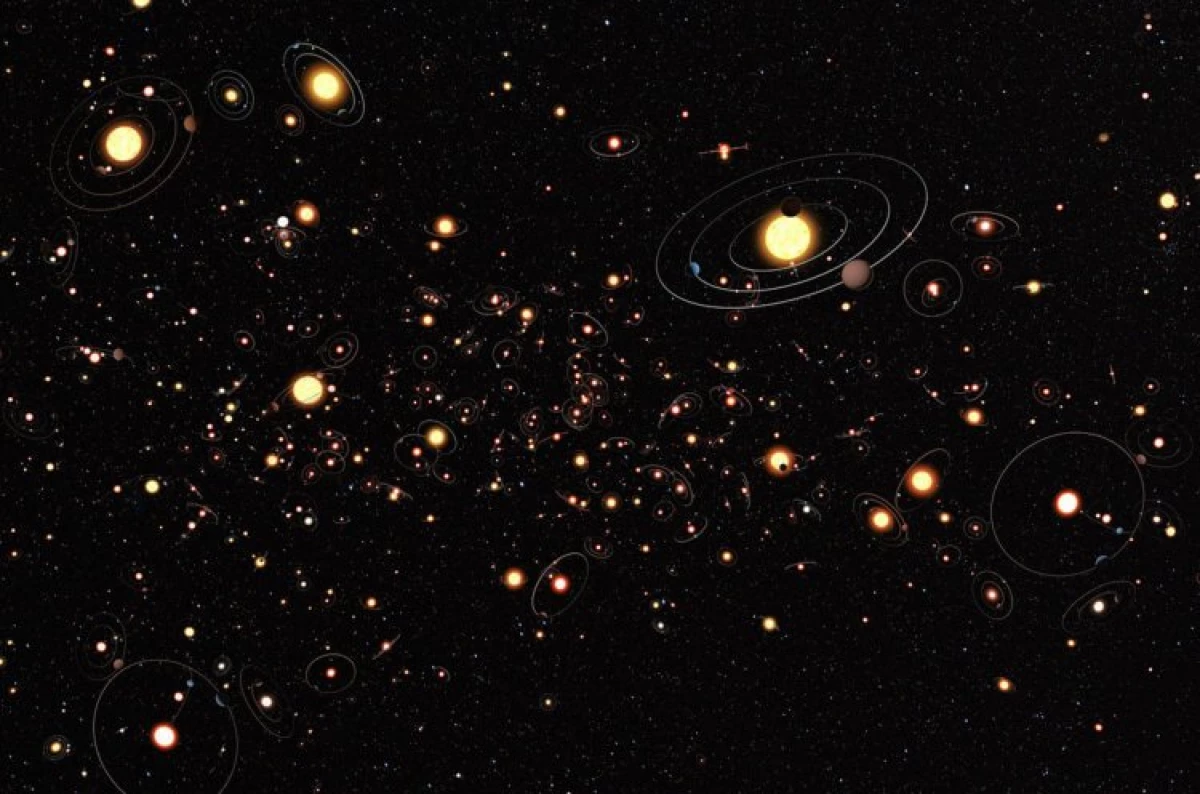In 1842, the physicist and mathematician Christian Doppler found that if the sound source and observer move relative to each other, the sound frequency perceived by the observer does not coincide with the frequency of the sound source. Today we call this phenomenon "Doppler Effect" and it is with its help Astronomers are looking for exoplans - worlds that rotate around other stars outside of our solar system. 442 Of 473, the exoplanets known today were detected using the Doppler effect, which describes changes in the frequency of any type of sound or light wave produced by a moving source relative to the observer. The phenomenon opened by the Austrian scientist in the 19th century is an integral part of the modern theories about the origin of our universe and is used in predicting the weather, studying the movement of stars, as well as in the diagnosis of cardiovascular diseases.

What is the Doppler effect?
Imagine a puddle, in the center of which sits a contented beetle. Every time he shakes his paws, it creates interference that move along the water. If these perturbations occur at some point, they will be distributed from this point in all directions. Since each indignation moves in the same environment, they will all move in all directions at the same speed.
The pattern created by the beetle paws will be a series of circles reaching the edges of the puddles with the same frequency. The observer at the point A (the left edge of the puddles) will see indignation, beating about the edge of the puddles with the same frequency as the observer at the point in (the right edge of the puddles). In fact, the frequency with which the circles reach the edges of the puddles will be the same as the frequency with which the beetle moves the paws, we will define it with two perturbations per second.

Now suppose that the beetle sails to the observer B, producing perturbations with the same frequency. Since the insect moves to the right, each indignation occurs closer to the observer in and further from the observer A and, appropriate, will reach the observer in faster. At the same time, the observer would seem that the frequency of perturbation arrival is higher than the frequency with which these perturbations arise; Observer A, on the contrary, it will seem that the frequency of perturbations is lower than in fact. This example, hopefully illustrates the Doppler effect.
Even more fascinating articles on the physical discoveries that the world changed, read on our channel in Yandex.Dzen. There are regularly published articles that are not on the site!
If not, we note that the Doppler effect can be observed for any type of wave - water waves, sound wave, light wave and so on. Imagine that the police car moves to meet you. When the car approaches you with a lilac on, the sound of the sirens becomes louder, but becomes quieter, as the car passes by. This is another example of the Doppler effect - an obvious shift of the sound wave frequency created by a moving source.
How does the Doppler effect work?
The Doppler effect is of great interest to astronomers who use information about the shift of the electromagnetic wave frequency produced by moving stars in our galaxy and beyond. In fact, the assumption of researchers that our universe expands with acceleration, partly based on the observations of electromagnetic waves emitted by the stars in distant galaxies. It is also possible to determine specific information about the stars inside the galaxies using the Doppler effect.
Modern telescopes allow astronomers to study the stars in distant galaxies. As a rule, they are looking for sources of light that emit electromagnetic waves. Observe the Effect of Doppler Astronomers can when the star rotates around its own center of mass and moves either towards the ground or from it. These wavelength shifts can be seen as fine changes in the star spectrum - rainbow colors emitted by light.
When a star moves to us, its wavelengths are compressed, and the spectrum acquires a bluish color. When a star is removed from us, its spectrum glows red.

In order to observe the red and blue glow, astronomers use a spectrograph - a high-resolution medalist, which shares incoming light waves on different colors. In the outer layer of each star there are atoms that absorb light on certain wavelengths, and this absorption is manifested in the form of dark lines in various colors of the spectrum of the star. Researchers use shifts in these lines as convenient markers to measure the values of the Doppler effect.
See also: Mandela's Effect - Why do people remember what was not?
It is impossible not to note that the Doppler effect is used not only in astronomy. Sending radar rays into the atmosphere and studying changes in wavelengths of return rays, meteorologists are looking for water in the atmosphere. The Doppler effect is also used in medicine with echocardiograms that send ultrasonic rays through the body to measure changes in the bloodstream to make sure that the heart valve works correctly, or to diagnose cardiovascular diseases.
